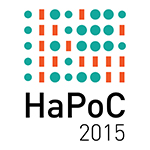Most of the criticism against the pioneers of Computer Art in the 1960s came in the form of a specialized version of the Lovelace objection: since machines simply follow orders, one cannot expect any creativity from them, hence the works of computer programmers, if they are the result of a creative process, must entirely come from the programmers' minds; as programmers are not artists, their works are spawned from a process that is not artistic and thus cannot be considered artworks. Today such an objection no longer holds because many artists use computers to create works shown in galleries and museums, that is, it seems like computers have entered the Artworld in full effect. Still, this new practice has not been accompanied by an adequate expansion of Art theory to accommodate it, which leaves the door open to criticism in the Artworld about whether computers are relevant and constitute an actual step forward in the field or are simply a fad. Moreover, the only subfield of Computer Art where computers can be shown to be essential, namely Interactive Art, poses a particularly critical problem regarding what distinguishes its works from videogames.

 PDF version
PDF version
